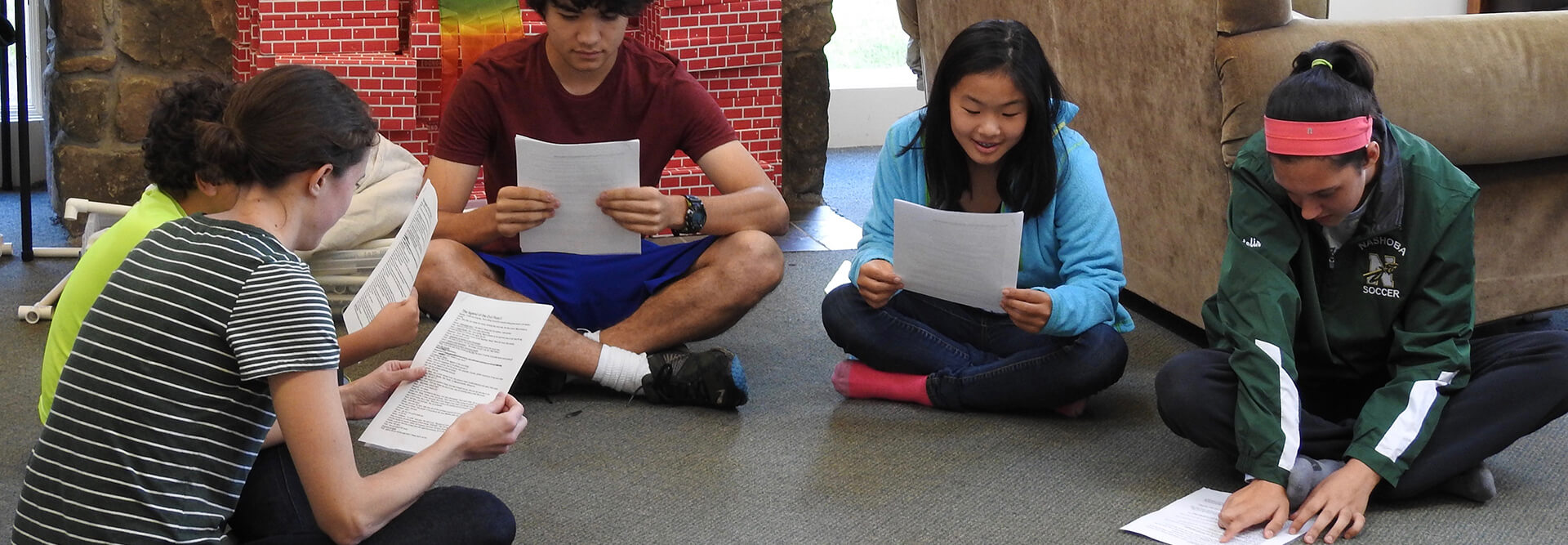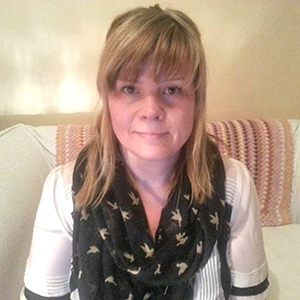I have been looking forward to reading Harriet Pattison’s book ‘Rethinking Learning to Read’ since I heard it was being published. As a home educating parent with two children, it has been a privilege observing them learning to read. We have been able to facilitate and support them in that process, reading to them, answering questions and typing for them as and when needed.
‘Rethinking Learning to Read’ opens up new conversations about learning to read, inviting us to think about reading in different ways and challenging some of the normative assumptions we may have come to hold about reading and learning more generally. It has been fascinating to read the rich and diverse range of accounts of home educating children learning to read presented in the book along with the author’s philosophical reflections on the implications of these experiences.
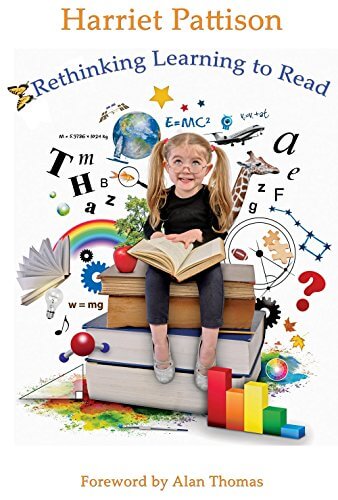
The Study
The book is based on Pattison’s PhD research which explores how children learn to read outside of school. Although there has been a great deal of research carried out related to mainstream school based learning populations, only a small number of studies have researched reading away from school. This is the first major study to date to explore this area and draws on the experiences of 311 families with a total of 400 children who took part in an in-depth online survey which was set up by Harriet Pattison and Alan Thomas in 2009. The research drew families from the UK, USA, Australia, New Zealand and Mainland Europe. The participating families adopted a range of approaches to learning and home education: some families were more structured in their approaches, while other families favoured autonomous and radical unschooling approaches and others an eclectic mix. Parents reported that their children were learning to read in a diversity of ways and accounts differed not only between families but also within families; no two children learned in exactly the same way. What was apparent was that each child followed a unique learning trajectory, which could be quite different from that found in normative studies.
Conceptualising and reflecting on metaphor’s of acquisition and participation: what is reading?
‘Rethinking Learning to Read’ invites us to take a step back to consider ‘what is reading?’ and what are the theories and metaphors we are drawing on to make sense of it? This has important implications for how we support our children in learning to read – as it influences whether we believe it is necessary to follow a particular method, to ‘teach’ our children or whether we believe that they can learn to read naturally with our facilitation and support.
In the book Pattison draws an important distinction between the metaphors of acquisition and participation first identified by Sfard (1998). The metaphor of acquisition involves thinking about learning to read as a cognitive skill that can be acquired sequentially while participation focuses on the child’s role as an important member of a social and relational network and an active participant in a wider literate community. To me this latter metaphor is an exciting and useful way of thinking which may be more able to account for the diversity of accounts of learning to read that were found in the sample.
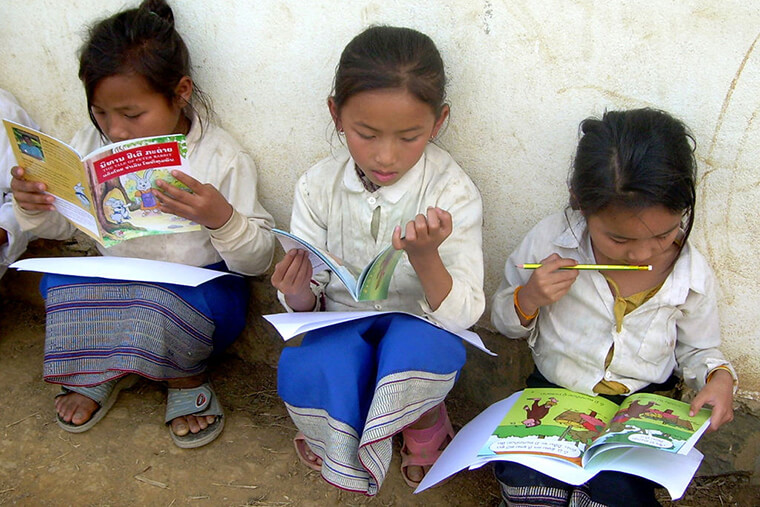
It also interests me as a clinical psychologist as it opens up conversations about the emotional, relational and psychological processes involved in learning to read and reflects on aspects of identity involved in becoming a reader and being part of a wider community. In my experience accounts based on the individual acquisition of cognitive skills do not tend to focus on these issues and the many diverse meanings and implications learning to read has for the child and the social processes involved.
Normative assumptions about reading and the use of phonic based approaches
The book explores the relevant background research which has been undertaken by educationalists and researchers. One of the dominant approaches which forms much of our thinking about reading is phonics. It draws heavily on the metaphor of acquisition and sees learning as the development of an individual cognitive skill which can be broken down into stages and learned in a sequential process. This mainstream view of reading has become so ubiquitous in our thinking and how we talk about reading that we forget it is a metaphor. It is this type of approach that much of mainstream research into reading has been based and which provides many of the normative standards we accept, such as viewing reading as a process of decoding text, assuming children need to be taught to read and at what age they will learn, along with presuming that reading skills can be meaningfully assessed.
What are the alternatives?
Although this approach is popular, it has been criticised and has elicited some controversy. There are alternatives such as whole word learning based approaches (I learned this way myself as a child reading ‘Peter and Jane’ books with my mum before I started school). However, in mainstream discourse these approaches have become marginalised and it is interesting to think about the alternatives as presented in Rethinking Learning to Read. As an adult I had been influenced by John Holt’s (1991; 1995) observations of children learning to read without needing to be ‘taught’. Holt explained how children could be in fact be damaged by being coerced and pressured to read in a school system which was unable to accommodate and respond to the child’s individual preferences and needs. These ideas along with unschooling philosophy that I had accessed mainly via online forums and sites such as sandradodd.com and Always Learning led me to trust that our children would learn to read in their own time with our support in ways that suited them. Peter Gray has also written some interesting accounts of unschoolers learning to read.
What approaches did home educating parents draw on?
Parents in the sample drew on a diversity of approaches and practices when supporting their children in learning to read. Perhaps unsurprisingly parents’ views in the sample were heavily influenced by phonics. However what was significant was that not all families used phonics based methods, some were openly critical of it and some of the children did not respond well and resisted a phonics based approach. Families shared: “No phonics, no flash cards, no traditional teaching methods were used in our home – for reading or anything else” and “Phonics doesn’t suit every child – as a very strong visual learner my daughter finds the individual sounds in words meaningless ... she hears words as a single sound.”
Some families drew on whole word learning approaches, some an eclectic mix, while others acknowledged the limitations of using methods and a number preferred to use no methods at all because this is what they felt was the best approach for their particular child and that they would learn to read naturally by engaging in everyday life. “Living a life style of literacy”; “Living life in a world where words are everywhere” and “Given time and exposure children will learn to read and will enjoy it.”
Some children also developed their own methods which drew on word recognition, memorisation and guessing, or together with a parent they co-created a unique approach which suited them. It was apparent that what suited one child may not suit another and this included children within the same family, one parent said: “There is not a “one-size-fits-all” magic formula” and another family: “often requiring different resources to be available at different times rather than following a single ‘method’ throughout.”
Away from phonics families were actively and pragmatically choosing methods and approaches with the best fit for the child and they were using those methods in ways that were facilitative of their relationships, the child’s learning and their emotional well being. In taking this open and flexible approach families were placing the child at the centre of the learning experience. For example, a parent said “Go with what works for that particular child” and another “The method is not important; the important [thing] is that the child likes it.“
The sample was characterised by a diversity of accounts, there was no one singular approach that could be used to describe the theoretical positions adopted by this group of parents. In fact as a home educating parent and also as a researcher Pattison explains that it is not necessary for a parent to hold an understanding of what reading is or how reading happens for it is precisely this “not knowing”, questioning and flexible state of mind that enables a parent to be reflexive and responsive to their child, putting the relationship first and re-thinking what reading actually is.
“There was no consensus on what reading might be. Home educators hold a variety of opinions- what is helpful is to acknowledge that there is more than one way of seeing and more than one way of approaching the meaning of the written word, but however we choose to do so, there will be important consequences for how we expect children to learn to read (Pattison, 2016).”

Parental attitude
What was particularly interesting was that what united parents across the sample, even those parents who had adopted phonics based approaches was their ability to be flexible and questioning of whatever type of approach or method they were using and to be open and guided by their child’s motivations and preferences. Parents’ critique of theory and method usually arose as a direct result of their child’s responses and reactions to it rather than as a result of philosophical inquiry. Pattison points out that these are important qualities for a parent to have when supporting a child who is learning to read and also when reflecting critically and philosophically about the nature of reading itself:
” [A] flexible attitude toward phonics represents an important shift in thinking about learning to read. Rather than thinking about the nature of reading, parents are thinking about the nature of their children as learners approaching reading. It is a change with important implications for the question, “what is reading”. On a practical level it puts the individual child at the centre of what it means to learn to read and that individuality becomes the focus for understanding learning. On a theoretical level that children may learn to read in different ways means that a universal definition of reading can no longer be predicated on a theory of reading pedagogy.” (Pattison, 2016)
How did parents support their child learning to read?
Whatever the methodological and theoretical approaches taken by parents in the sample, they supported their child learning to read in three main dynamic and evolving ways 1) Reading aloud; 2) conversation and 3) Games, toys, computers. What was fascinating here was that each category represented a multiplicity of practices and activities which held different meanings for each parent-child dyad and were impacted upon by the types of relationships they developed over time. So on the surface an activity might appear to be alike but the narrative accounts reflected quite different meanings and motivations. Reading aloud meant different things for different families and for each unique parent/child and sibling relationship.
How children responded was also very different: some children wanting to be read to frequently, whilst other children not wanting to be read to at all. What seemed to be important was that the child was able to influence and control how they engaged with the options and activities available to them. It was wonderful to read about the varied, rich and meaningful relationships, play and conversations between parents and children that had developed over time.
No one set of practices or activities together constituted a “core essence” of what was necessary to learn to read. What was apparent was the dynamic interactions between parent and child and the wider community. The child quite clearly influencing the course of learning and reacting differently to the environment that is offered to them and shaping it in ways that suit them. Likewise each parent will develop a unique relationship with each child and will respond to them differently.
Gabor Mate explains in the video why no two children have the same parents due to the parents different emotional reaction to each child. Pattison draws our attention to open systems, chaos and complexity theories (often drawn on family therapy) as a useful way of thinking about how these dynamic influences and interactions might help shape our understanding of how our children are learning to read.
Dr. Gabor Mate – No Two Children Have the Same Parents (1:49)
What role did children play in shaping their learning experience?
An exciting and revealing aspect of the study is the central and important role that children took in guiding, determining and shaping their learning experience and the types of relationships they formed with the environment and the activities available to them. Each path was unique and shaped according to the child’s specific interests, preferences, readiness, motivation and their relational context. Overall parents in the sample seemed to very sensitive to this and tried to be flexible and responsive to their children’s needs, particularly when this meant revising their approach as they went along. It is perhaps not surprising that children will thrive when given the opportunity to guide their own learning and to make meaningful choices in the context of caring and supportive relationships. This is something which is not often available to children who are in mainstream education. Some children may thrive in an environment which is structured and relatively pre-determined but this may be at a cost. Other children may struggle and for the children in the study who had experienced difficulties in school, home education provided a more flexible, responsive and reparative alternative.
Families as a communities of literacy practice and the metaphor of participation
The research narratives provide us with evidence of children learning to read outside of school in quite different ways where often their uniqueness, difference and individuality is recognised, valued and celebrated. These alternative accounts lead us to think about reading in ways which cannot be explained simply by the use of a single method or approach to reading. As well as drawing on complexity theory another useful metaphor mentioned earlier that Pattison makes use of is that of participation. From this perspective families can be understood as ‘communities of literacy’ in which the child is located as an active member of a wider literate community who increasingly becomes more involved in the community activities of reading and literacy as and when they are interested, motivated and ready to do so. From this perspective there is less anxiety and pressure to learn to read in a particular way or at a particular age as it is accepted, almost as an inevitability, that the child will learn to read because they are a member of a literate community as and when they are ready. Pattison describes here the implications of this view:
“Taken to its logical conclusion, viewing families as communities of literacy practice recasts reading, not as a cognitive skill to be addressed through the metaphors of personal acquisition, but as a social practice that is carried out and is meaningful within a particular social and cultural setting. Considering families as communities of practice is a way of contextualising learning at home so that children can be seen as becoming participants in the literate world that already exists around them.” (Pattison, 2016).
Challenging normative assumptions
By drawing on post modern perspectives and acknowledging the multiplicity of views and experiences found within this research ‘Rethinking Learning to Read’ challenges a number of normative assumptions.
1) Age children learned to read
One of the assumptions to be questioned in ‘Rethinking Learning to Read’ is the normative research and educational based accounts which structure our ideas about the age at which we expect children to read. The ages at which children learned to read in the sample ranged between 18 months and 16 years. The ages varied widely not only between families but also within them. The home educating families reported that their children were able to learn in a variety of ways, for example, through play, auditory, practical activities, TV and video, computers and digital media generally learning by participating in a wide range of activities at home and in their communities.
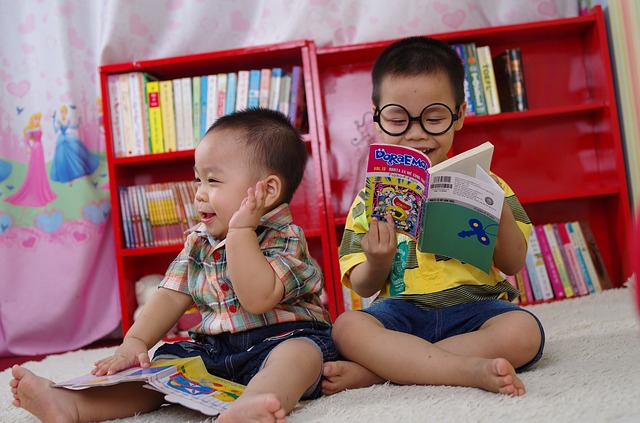
Children were free to pursue their interests and passions in ways that were meaningful to them and were not restricted if they were not yet reading. Parents also often read to children and supported them in their activities which may have required reading or writing (if the children desired this). Learning to read at an older age did not appear to have any negative associations, children often learning to read quickly and effortlessly when they were ready. In fact a number of parents described their children benefiting from learning to read according to their own schedule and not pressuring them to learn according the parents own expectations.
2) Standardised reading trajectory
The evidence from the home educating families also called into question the idea that all children will follow a standardised trajectory when learning to read. Some children did learn in an incremental way over time (although ages varied widely as mentioned above) but other children appeared to learn to read in non-incremental ways, for example, in jumps and starts, sometimes with gaps of months or years between participating in observable reading activities although it was apparent they were still learning in ways that were meaningful to them; while others began reading what might be considered more difficult material first demonstrating a downwards curve rather than in incremental incline. If we understand that it is normal for children to progress according to very different learning trajectories we may be able to modify our expectations about how we believe our children ‘should’ be progressing and instead meet them where they are at. These are also important issues to consider if any type of external framework of assessment is required for children learning to read at home.
3) Challenging the idea of needing to be taught to read
Many parents in the study felt uncomfortable with the use of the term ‘teach’ to describe the kinds of activities and relationships that they had developed with their children. Some parents preferred the words ‘helped’, ‘facilitated’, ‘encouraged’ or ‘guided’. Relationships were characterised by individuality and flexibility. Of the total sample 91 parents said they had taught their child to read and 133 said that they had not and the remaining 87 questioned the concept of ‘teaching’ itself. Many of these parents challenged the traditional assumptions about the teaching role, which may be seen as ‘top down’ and inflexible and many challenged the artificial binary created by the terms ‘teacher’ and ‘learner’. Parents also saw themselves as life long learners who were ready to be open and to change their minds:
“Just as parents were inclined to foreground their child as an individual learner above the idea of reading as a set method, so they were also inclined to temper their ideas about teaching and learning to the circumstances and relationships of their home education. A key influence in shaping the practice which emerged, as well as the beliefs surrounding such practice, were the children themselves who exerted considerable agency over the course which their learning took ... What came across instead, from both sides of the supposed structure/autonomous divide was a deep questioning of the fundamental nature of teaching, flexible attitudes on the part of parents who frequently changed and adapted their ideas in the context of dynamic situations and children who very often had their own strong ideas about reading and how and when they wanted to explore the written word.” (Pattison, 2016).
4) Challenging Special Educational Needs (SEN)
Deconstructing many of the normative assumptions that have developed around learning to read opens up a space to think about special educational needs through an alternative lens. From this perspective SEN can itself be thought of as a product of a normative institutionalised system that is not sufficiently attuned, flexible and responsive to individual children’s needs.
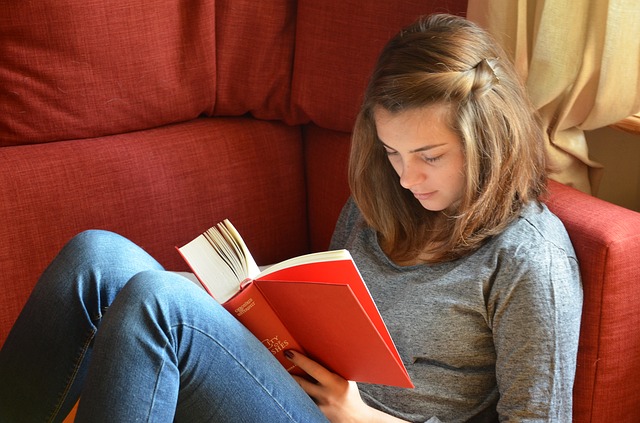
In the home environment, when a child is perceived as having difficulty reading many of the home educating families realised that the child might not be developmentally ready to read or that they might not yet be motivated or interested in doing so. One parent commented: “Children will read when they are ready and pushing earlier can create unnecessary anxiety and reading stumbling blocks.”
The attitude of these parents was to enable the child to have space and to wait and to return to the activity at a later time ideally without pressure and in doing so it was the parents who altered their expectations. In taking this approach the children were able to develop in their own time and the difficulties resolved themselves as the child began to read when they were ready. This is in line with the observations made by John Holt in a chapter he wrote on learning difficulties in Teach Your Own (2003). Holt noted that many of the learning issues that were perceived as difficulties (such as letter reversal, misspelt or mispronounced words) would resolve themselves over time if they were not commented upon or interfered with by the teacher or parent.
“Where method and expectation are conceived in terms of variability rather than normalism the idea of ‘reading problems’ undergoes a transformation. Problems are created when children do not react to learning expectations in the predicted ways.” (Pattison, 2016)
In school children who are not meeting standard norms may face increasing pressure and levels of intervention and this in itself may created stress and perpetuates the idea that the child has a difficulty with reading and/or learning. Pattison shares some of the examples of children who had negative experiences of reading in school and how home educating has enabled them to repair some of the damage. However although the children did go on to learn to read at home some of them never recovered their love of reading.
Families reflected on the experience of children who had struggled for various reasons with reading in school: “I think the issues he had at school with reading did a lot of damage to his enjoyment of books. He loved to sit and listen to stories and now won’t do that. ” and another family explained: “His English teacher at secondary school tried to force him every lesson to read in front of the class, enough to put him of reading altogether, caused a lot of intolerable stress for him, never mind the humiliation and embarrassment. He is happy now but we are trying to reverse years of failure at school.”
Research suggests that children who receive formal instruction earlier are less likely to develop positive attitudes towards reading than those who received formal instruction at a later age.
I suspect at least some of the difficulties encountered have to do with the emotional quality of the attachment relationship the child finds themselves in whether with a teacher or a parent and the capacity of the adult to be attuned and responsive to the individual child’s needs. A child who has experienced pressure and coercion to learn to read may recover if their parent can be flexible, responsive and open to the child’s needs and preferences but their love of reading and their relationships may be coloured by their experience.
5) Assessment
Another idea which can be challenged by this research is the idea that children’s ability to read at any particular stage can be meaningfully assessed outside the context of their relationships, interests and activities. Home educating families had developed different ways of understanding how and what their children were learning but the emphasis and importance placed on assessment and how this was thought about was quite different to that found in mainstream education. Parents often knew that their children were learning because of the kinds of questions that they were asking, the conversations that they had or the books that their children were reading and the activities and interests that they were engaging in.
Reading as the product of an emergent self organising system
Throughout the book Pattison has taken us on a journey deconstructing some of our commonly held assumptions about reading and drawing on the rich examples taken from her research that lead us to a place where we might come to consider reading as emerging from a complex self-regulating system. What matters from this perspective is not adherence to any particular set of methods, practices or norms but rather the ability of the parent, professional or researcher to embrace complexity and a multiplicity of meanings. This in itself is exciting as it opens up the evidence base for approaching reading in new and more varied ways and may enable parents to be more confident when they choosing to be responsive to their child’s unique learning preferences and to be bold when following an alternative route.
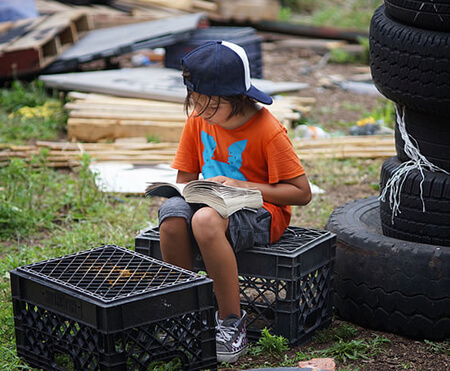
The author hopes that the book will provide an exploratory map of what is possible rather than ‘how to’ instructions and I believe she has been very successful in this. It also opens up the opportunity of having new conversations about how our attachments may influence the emotional and relational aspects of learning and also from an attachment lens how children may come to identify and feel about themselves as readers and members of a wider literate community.
Valuing individuality, difference and diversity
Drawing on complexity theory and postmodern perspectives ‘Rethinking Learning to Read’ emphasises the importance of valuing multiple meanings and accounts and thus being able to recognise the individuality and difference of each child, celebrating difference by supporting and facilitating their child’s learning in ways that are meaningful and helpful to them.
“Every child is an individual. Differences do not need to be problematized as they are inevitable and therefore normal.” (Pattison, 2016).
There are no benefits in pressurising, coercing or trying to fit a child into a framework that they are not suited to fit. In fact the evidence points to this being unhelpful and damaging in terms of a child’s emotional well being, their own identity as a reader, their relationship to literature and their evolving role in the wider community. Educating children at home offers parents the chance to be responsive, flexible and attuned to their child’s unique learning preferences and offers more possibility of the child being able to guide and influence their own learning.
I believe ‘Rethinking Learning to Read’ has captured many of the fundamental issues which are essential to child’s well being when learning to read and could be incredibly helpful for parents, relatives and professionals wanting to learn more about supporting children learning to read outside of school. I know that the author would like the themes presented in this research to be a conversation that is to be continued and in future research I would be interested in learning more about how children themselves describe their experience of learning to read.
If you enjoyed this article and feel called to give back to ASDE, here are ways you can support our work:
- Donate money
- Share our content with others! Click one of the buttons above to easily share on Twitter, Facebook, or email.
- Consider becoming a Contributor for Tipping Points
Tipping Points Magazine amplifies the diverse voices within the Self-Directed Education movement. The views expressed in our content belong solely to the author(s). The Alliance for Self-Directed Education disclaims responsibility for any interpretation or application of the information provided. Engage in dialogue by reaching out to the author(s) directly.


